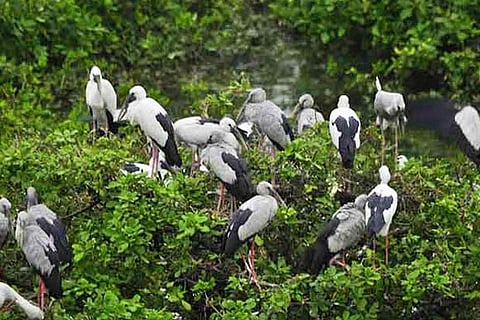

Chennai
Animal pandemics have much to teach us about our own. Last summer, when most of us were still finding our footing, I spoke to a crow ecologist at Binghamton University named Anne Clark, who mentioned “our pandemic,” sounding as though she had lived through this before. She was talking about the West Nile virus, a mosquito-borne pathogen that killed nearly 40 percent of the crows at her study site near Ithaca, N.Y., in 2002 and 2003.
The trees were full of sick crows those years. They sat at a distance from their families with their feathers puffed out and disappeared within five days of showing signs of infection. “We would miss a bird that we really knew well,” Clark said when we spoke again recently. “You’d find his body behind a dumpster.” Her colleague Kevin McGowan from Cornell University returned to his office a few times to find someone had left a dead crow in his workspace. When the COVID-19 pandemic began, there were still some crows at their field site that had survived a second West Nile die-off in 2012 and 2013. Clark looked up at them and they looked back down at her. It felt as though their roles had been reversed.
Such stories are common among field biologists. Jane Goodall had been tracking chimpanzees in Tanzania for six years when a polio outbreak killed six animals in 1966 — an experience she has called “the darkest I have ever lived through.” The biologist Craig Packer had studied lions for more than 15 years when canine distemper virus spilled over from village dogs and killed more than a third of his animals in 1994. “The very day I arrived back in the Serengeti, one of our long-term study animals started having convulsions in a very shallow pond,” he remembers. “It just couldn’t lift its head and drowned.”In a 2006 paper, Clark and McGowan called the West Nile outbreak “a natural, albeit uncontrolled, experiment” that resulted in several “unusual social events.” With so much free territory, young female crows, who often disperse great distances, settled near and remained in close contact with their parents. One adult female who lost her mate and offspring paired up with the widowed male on a neighbouring territory and then seemed to adopt his children when he died too. The next year, they even helped her raise her own children with a new mate. “West Nile made clear to us how important being a member of a group is to a crow,” Clark says.
Many of us would say the same about our own experiences during the COVID-19 pandemic. Stories about infected crows sleeping in communal roosts make you grateful for the options of social distancing and isolation. It also helps you to understand our many failures as springing from our nature as social beings. “We think of this pandemic as a peculiarly human experience, but it is really the experience of all highly social animals,” Clark says. Rather than looking to wild animals as symbols of hope or freedom, maybe we can recognise them simply as fellow creatures with only the cruel hand of natural selection to balance the benefits of community and cooperation against the risks of disease. Documenting the sickness of animals can lead us to the sources of their beauty. The faces of suffering and splendour are not always as different as they seem.
Crair is a writer whose stories about animals have appeared in The New Yorker
The New York Times
Visit news.dtnext.in to explore our interactive epaper!
Download the DT Next app for more exciting features!
Click here for iOS
Click here for Android